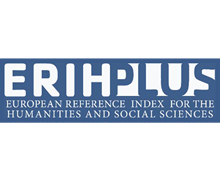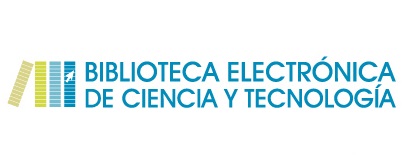The mud not only brought the Baroque: an african-american fold between the Caribbean and the River of Silver
DOI:
https://doi.org/10.53971/2718.658x.v9.n14.22858Keywords:
Afro-america, Baroque, colonialism, Cucurto, literatureAbstract
In Latin America it is possible to encounter a profusion of texts related to Afro-Indo-American elements that dialogue with the particular sense of what Severo Sarduy called “the neo-baroque”. Lezama Lima’s and Alejo Carpentiers’ work, along with the poetry of Osvaldo Lamborghini, and the prose of Washington Cucurto, seemed to have opted for an irreverently anti-Occidentalist aesthetic that urges reading culture against to the established. With a marked influence from the Caribbean and the region of the Rio de la Plata indistinctly, we found new leaks that re-signify what Néstor Perlongher denominated as <<neobarroso>>.
This article analyzes how this neologism is not only applicable to literature, but also as the mark of a historical sensitivity. In order to accomplish this, we trace the linking points between the Afrio-american history and the literary work of Cucurto. As a result, we have find the traces of a new <<Caribbean drift>> linked with the Rio de la Plata.
This way, we contribute to the construction of a genealogy that links artistic and social sensibilities through the study of its ca(r)nnibal and transplatinian characteristics.
Downloads
References
Baigorria, Osvaldo (2002) Georges Baraille y el erotismo. Campo de ideas, Madrid.
Barrán, José Pedro (2017) Historia de la sensibilidad en el Uruguay: la cultura “bárbara”; el disciplinamiento . Ediciones de la Banda Oriental, Montevideo.
Benjamin, Walter (2003) La obra de arte en la época de su reproductibilidad técnica. Editorial Itaca, México, D. F.
Cucurto, Washington (2015) Cosa de negros. Interzona, Buenos Aires.
Cucurto, Washington (2006) El curandero del amor. Emecé cruz del sur, Buenos Aires.
Cucurto, Washington (2009) Hasta quitarle Panamá a los yankis. Eloísa Cartonera, Buenos Aires.
de Granda, Germán (1971) Un afortunado fitómino bantú: Macondo. En Thesaurus, tomo XXVI, nº 3. Instituto Caro y Cuervo, Bogotá, pp. 485-494.
Einstein, Carl (2011) Negerplastik. Editora UFSC, Florianópolis.
Miceli, José Eduardo (2005) La cumbia villera argentina: hacia un análisis discursivo de los procesos de construcción identitaria [online]. Disponible en: http://carlosreynoso.com.ar/archivos/jmiceli_la-cumbia-villera-2005.pdf (consultado el 26-10-2018).
Nancy, Jean-Luc (2008) A la escucha. Amorrortu, Madrid.
Perlongher, Néstor (1996) Prosa plebeya: ensayos 1980- 1992. Ediciones Colihue, Buenos Aires.
Quintero Rivera, Ángel G. (2009) Cuerpo y cultura: las <> y la subversión del baile . Iberoamericana, Madrid.
Rodrigues Molas, Ricardo (1993) Aspectos ocultos de la identidad nacional: los afroamericanos y el origen del tango . En Ciclos, año III, volumen III, nº 5, Buenos Aires, pp. 147-161.
Sarduy, Severo (1972) Obra completa. ALLCA, Colección Archivos, Madrid.
Sarlo, Beatriz (2006) Sujetos y tecnologías: la novela después de la historia. En Punto de vista, año XXIX, nº 86, Buenos Aires, pp. 1-6.
Trambaioli, Marcella (2002) Apuntes sobre el guineo o baile de negros: tipologías y funciones dramáticas . Aiso, actas VI, Madrid, pp. 1773-1783.
Williams, Raymond (2000) Marxismo y literatura. Ediciones Península, Barcelona.
Zapata Olivella, Delia (1962) La cumbia: síntesis musical de la nación colombiana; reseña histórica y coreografía . Revista colombiana de folclor, vol III, nº 7, pp. 187-204.
Published
How to Cite
Issue
Section
License
Aquellos/as autores/as que tengan publicaciones en esta revista, aceptan los términos siguientes:
- Los/as autores/as conservarán sus derechos de autor y garantizarán a la revista el derecho de primera publicación de su obra, el cuál estará simultáneamente sujeto a la Licencia de reconocimiento de Creative Commons que permite a terceros compartir la obra siempre que se indique su autor y su primera publicación esta revista.
- Los/as autores/as podrán adoptar otros acuerdos de licencia no exclusiva de distribución de la versión de la obra publicada (p. ej.: depositarla en un archivo telemático institucional o publicarla en un volumen monográfico) siempre que se indique la publicación inicial en esta revista.
- Se permite y recomienda a los/as autores/as difundir su obra a través de Internet (p. ej.: en archivos telemáticos institucionales o en su página web), luego de su publicación en la revista. (Véase El efecto del acceso abierto).























